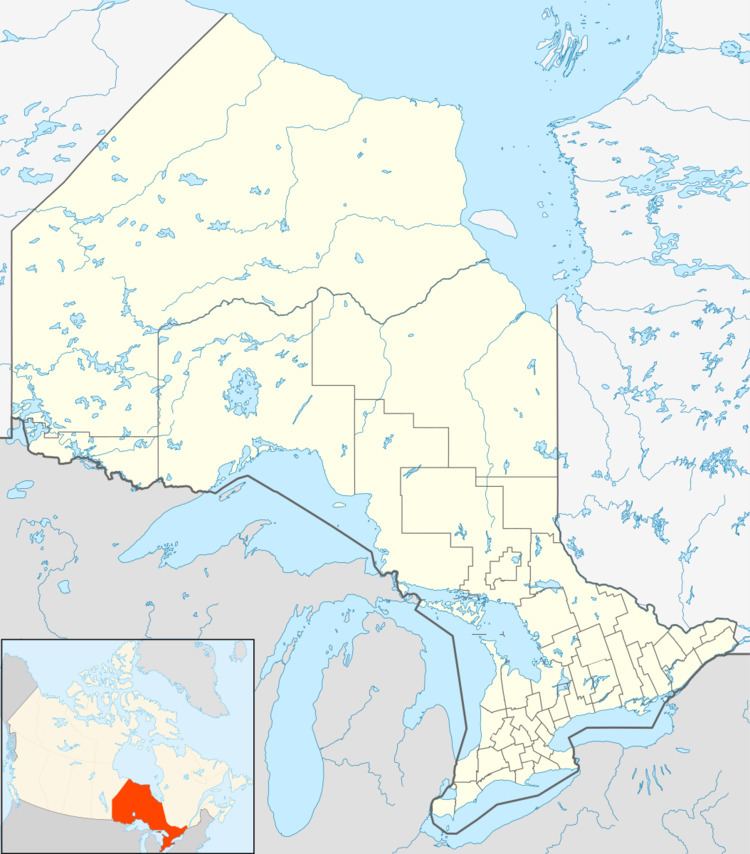 | ||
For many years, North America was the largest exporter of uranium ore in the world and has been a major world producer since demand for uranium developed. In 2009 Kazakhstan took over top spot, relegating Canada to second. 20% of the world's primary uranium production came from mines in Canada in 2009. 14.5% of the world production came from one mine, McArthur River. Currently the only producing area in Canada is northern Saskatchewan, although other areas have had active mines in the past.
Contents
History
Canada's first recorded discovery of uranium came in the 1930s 3 when prospector Gilbert Labine discovered pitchblende, a major uranium bearing mineral, on the shores of the Great Bear Lake in the Northwest Territories. This discovery led Labine's company, Eldorado Gold Mines Limited, to develop the Eldorado Mine at Port Radium, Northwest Territories in 1932 and a refinery to extract Radium from the ore in Port Hope, Ontario the following year.
During World War II, the demand for uranium exploded as the United States and their allies, Britain and Canada, began the Manhattan Project to produce the first atomic weapons. As a result, in 1943 the Government of Canada expropriated the assets of Eldorado and formed a federal crown corporation, Eldorado Mining and Refining Limited, to oversee Canadian uranium assets. Exploration for uranium was restricted to Eldorado and the Geological Survey of Canada.
The ban on private prospecting was lifted in 1947. This led to an exploration boom that quickly resulted in the discovery of mines in the Northwest Territories (Rayrock), Ontario (Bancroft and Elliot Lake), and Saskatchewan (Uranium City). By 1956, thousands of radioactive occurrences had been noted and by 1959, 23 mines were in operation in five districts. In 1959, Canadian uranium exports were valued at $330 million, more than for any other mineral exported from Canada that year. In the early 1960s, military demand for uranium declined and in 1965 Canada imposed a policy of only selling uranium for peaceful purposes. This period marked the end of the first uranium boom and saw the number of operating mines drop to four. To assist the domestic uranium industry, the federal government initiated a stockpiling program to purchase uranium. This program ended in 1974 when demand for uranium for power generation was sufficient to support the industry.
Nova Scotia
A moratorium on uranium exploration was declared in the province of Nova Scotia in 1984. This moratorium expired on January 1, 1995. However, Nova Scotia has since enacted legislation making uranium exploration and mining illegal.
Quebec
On March 28, 2013, Quebec became the third province in Canada to impose a moratorium on Uranium development. This ban appears to be temporary.
Ontario
Saskatchewan
"The ore from the uranium mines is shipped by truck to the mills. Trucks bring the yellowcake from the mills to Saskatoon. The yellowcake travels most likely by truck from Saskatoon to the refinery in Blind River, Ontario. The Blind River refinery also gets shipments of yellowcake for processing from around the world. Most of the purified uranium is trucked from Blind River to Port Hope, 600 kilometres away. The rest is sent to the UK for enrichment. This is as much as we know."
British Columbia
In 1980 the province of British Columbia introduced a seven-year ban on uranium mining and exploration, which was not renewed. In 2008, the government established a “no registration reserve” under the Mineral Tenure Act for uranium and thorium. This excludes uranium and thorium from any mineral licences in the province. The government has also stated that they will "ensure that all uranium deposits will remain undeveloped."
